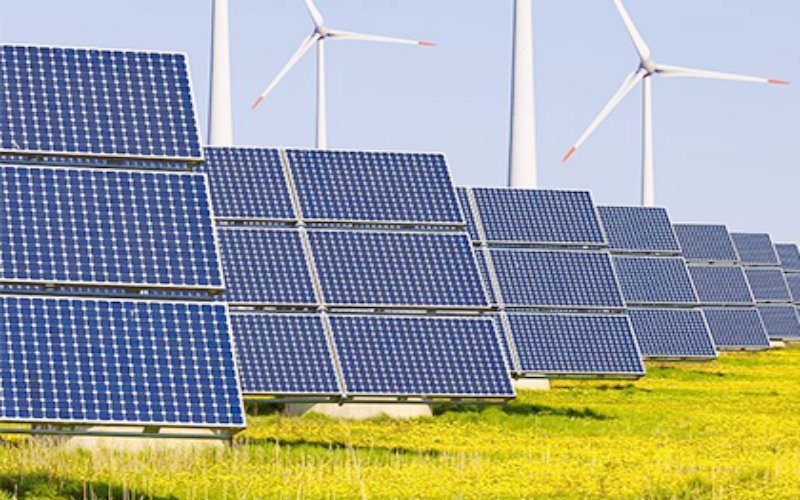As the world moves toward cleaner and more sustainable energy sources, the development of smart grids has become essential. These advanced systems not only improve energy management but also enhance the efficiency and reliability of power distribution. By integrating renewable energy and enabling more intelligent consumption, smart grids and energy efficiency are paving the way for a greener future.
What Are Smart Grids?
Smart grids refer to electricity networks that use digital technology to manage the supply and demand of energy more efficiently. Unlike traditional grids, which deliver energy in one direction—from the power plant to consumers—smart grids create a two-way communication between energy providers and users. This technology enables real-time monitoring and adjustments, leading to enhanced energy efficiency.
Why Do We Need Smart Grids for Energy Efficiency?
The global energy demand continues to grow, placing immense pressure on aging infrastructure. Smart grids offer a solution by optimizing the use of available energy resources. They can accommodate the fluctuating nature of renewable energy sources like solar and wind, which are essential for reducing our reliance on fossil fuels. By making the grid more responsive, smart grids and energy efficiency help to minimize waste and ensure that power is available when and where it’s needed.
How Smart Grids Work
The smart grid uses a combination of sensors, meters, and data analytics to collect information about energy production and consumption. This data is used to predict demand patterns, allowing energy providers to adjust supply in real-time. Smart grids also help identify and resolve issues such as outages or inefficiencies before they lead to significant disruptions.
For instance, in traditional grids, a power outage may go unnoticed until consumers report it. With smart grids, the system can detect outages immediately, isolate the problem, and reroute power to minimize the impact. This increases the overall reliability of the energy system, making it both more efficient and resilient.
Key Features of Smart Grids and Energy Efficiency
- Real-time monitoring: Smart grids continuously collect data on energy consumption, allowing for quick adjustments to supply and demand.
- Integration of renewable energy: By managing the intermittent nature of renewable sources, smart grids make it easier to incorporate solar and wind power into the energy mix.
- Consumer empowerment: Through tools like smart meters, consumers can track their energy use and adjust their habits to save on electricity bills.
Renewable Energy Integration
One of the most significant benefits of smart grids is their ability to support renewable energy integration. Traditional power grids struggle with the intermittent nature of renewable energy sources. Solar panels only generate power when the sun shines, and wind turbines require wind to function. This variability can cause imbalances in energy supply, leading to inefficiencies.
However, smart grids and energy efficiency go hand-in-hand when it comes to handling renewable energy. Smart grids use advanced algorithms to forecast energy production and consumption, ensuring a balance between supply and demand. By accommodating these fluctuations, smart grids maximize the use of renewable energy and reduce the need for backup from fossil fuels.
Energy Storage’s Place in Smart Grids
A key component of smart grids is energy storage, which helps smooth out the supply-demand fluctuations. When renewable energy is produced in excess, it can be stored and used later when demand is higher or production is low.
For example, on a windy day, wind turbines may generate more energy than needed. Instead of wasting this energy, smart grids store it for later use, contributing to greater energy efficiency.
Advantages of Energy Storage in Smart Grids
- Grid stability: By storing energy during low-demand periods, smart grids can meet peak demand without overloading the system.
- Resilience: In the event of outages or natural disasters, stored energy can be used to maintain critical services, ensuring that the grid remains operational.
Decentralized Energy Generation
Smart grids are also transforming how energy is generated and distributed. In the past, energy was produced at large power plants and distributed over long distances. Today, smart grids allow for decentralized energy generation, where energy can be produced locally through rooftop solar panels, small wind farms, or other renewable sources.
Benefits of Decentralized Energy in Smart Grids
- Reduced transmission losses: Decentralized energy generation means electricity doesn’t have to travel long distances, which reduces energy losses.
- Community empowerment: Local energy production allows consumers to become “prosumers,” who both consume and produce electricity, contributing to a more efficient grid.
Resilience Against Climate Challenges
As extreme weather events become more common due to climate change, the adaptability of smart grids is essential. Traditional grids are vulnerable to disruptions caused by storms, floods, or heatwaves. Smart grids improve grid resilience by detecting and isolating faults, rerouting power to unaffected areas, and ensuring a faster recovery after disruptions.
This ability to “self-heal” not only enhances energy efficiency but also ensures that essential services like hospitals and emergency responders have uninterrupted access to power during critical times.
Energy Efficiency and Cost Savings
One of the most noticeable impacts of smart grids is the cost savings they offer. With real-time monitoring and predictive analytics, utility companies can optimize energy production, reducing operational costs. These savings are often passed on to consumers, leading to lower electricity bills.
For consumers, the use of smart meters provides insights into energy consumption patterns, allowing them to reduce unnecessary energy use. This improves overall energy efficiency and leads to further savings.
Empowering Consumers with Smart Grids
Smart grids and energy efficiency go beyond optimizing energy distribution—they empower consumers to take control of their energy usage. Tools like smart meters and mobile apps offer detailed information about energy consumption, allowing users to adjust their habits to reduce waste and save money.
Challenges in Implementing Smart Grids
Despite the clear benefits, there are challenges to implementing smart grids. High initial costs for upgrading infrastructure, along with the need for new regulatory frameworks, can be barriers to widespread adoption.
Overcoming Implementation Challenges
- Investment: While the upfront costs are high, the long-term savings in terms of energy efficiency and reliability make smart grids a worthwhile investment.
- Collaboration: Governments, utility companies, and the private sector must work together to ensure the successful implementation of smart grids.
Also visit on techitl.com.




